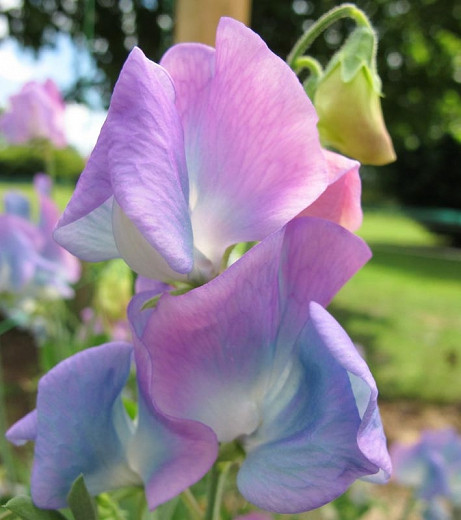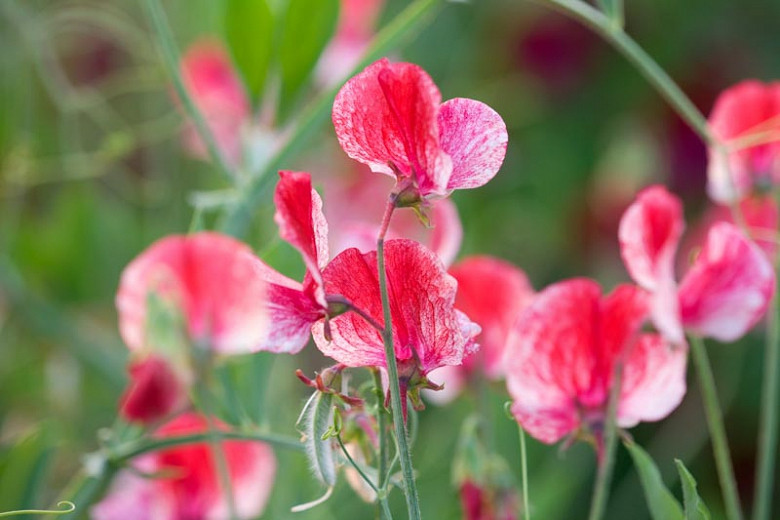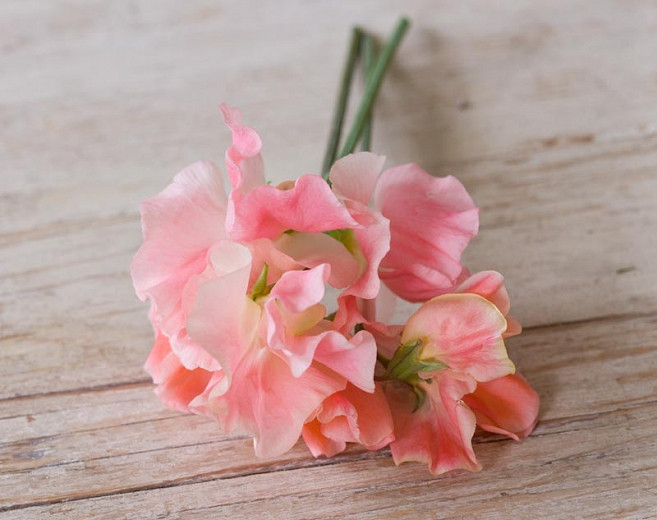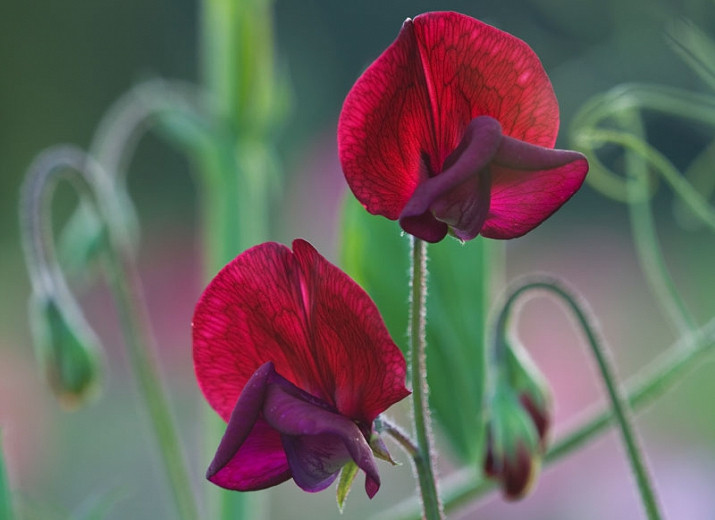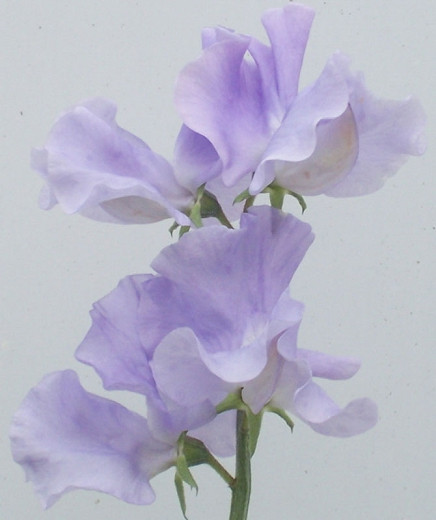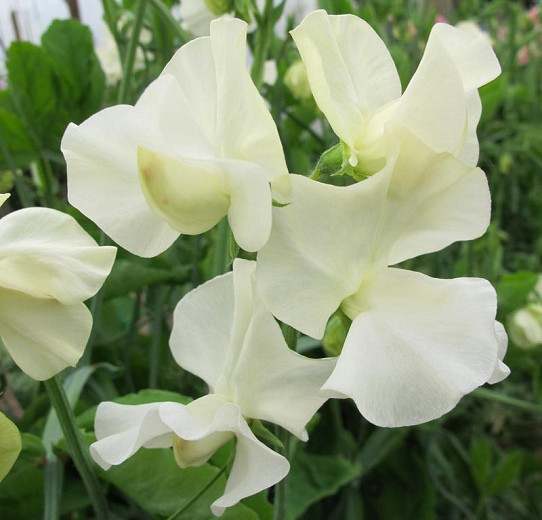Lathyrus latifolius (Perennial Sweet Pea)
Award-winner Lathyrus latifolius, commonly known as Everlasting Pea or Perennial Sweet Pea is a vigorous climbing perennial that produces racemes of 5-11 vibrant rose to white pea-like flowers, 1 in. across (2.5 cm). Blooming all summer, if not allowed to go to seed, the attractive blossoms are borne on winged stems clad with paired, blue-green leaflets bearing tendrils. They will ramble along the ground or climb up nearby vegetation or support structures. Unlike Lathyrus odoratus, the flowers of Everlasting Peas are not fragrant. Easy to grow, Lathyrus latifolius requires little care and enjoys some drought tolerance.
While native to the Mediterranean, Everlasting Peas have been grown in North America since 1700s where they have naturalized to such a point that they are now considered to be invasive in some areas.
- Recipient of the prestigious Award of Garden Merit of the Royal Horticultural Society
- Grows up to 6-9 ft. tall (180-270 cm) and 3-6 ft. wide (90-180 cm). This plant spreads by rhizomes and will easily self-seed.
- Loves full sun or light shade in fertile, medium moisture, well-draining soils. Best performance occurs in cool soils with good air circulation. Provide even moisture and regular fertilizer throughout the growing season. Avoid overhead watering.
- Ideal to sprawl along the ground or twine onto support structures. Great for beds, borders, containers or as ground cover for banks and slopes.
- Attractive to bees and butterflies, but ignored by deer.
- Cut back to ground level in the fall.
- Propagate by seed
- No serious disease or pest issues, but may be attacked by slugs, snails, Pythium root rot, powdery mildew, rust, gray mold, and various leaf spots.
- Everlasting Peas are NOT edible! Acute ingestion may cause mild stomach upset.
- Toxic to dogs, toxic to cats, toxic to horses.
- Native to Europe.
- Find where this species is invasive in the United States.
Requirements
| Hardiness | 5 – 9 |
|---|---|
| Heat Zones | 5 – 9 |
| Climate Zones | 1, 2, 3, 4, 5, 6, 7, 8, 9, 10, 11, 12, 13, 14, 15, 16, 17, 18, 19, 20, 21, 22, 23, 24 |
| Plant Type | Climbers, Perennials |
| Plant Family | Lathyrus – Sweet Peas |
| Exposure | Full Sun, Partial Sun |
| Season of Interest | Summer (Early,Mid,Late)Fall |
| Height | 6' – 9' (180cm – 270cm) |
| Spread | 3' – 6' (90cm – 180cm) |
| Spacing | 18″ – 24″ (45cm – 60cm) |
| Water Needs | Low, Average |
| Maintenance | Low |
| Soil Type | Chalk, Clay, Loam, Sand |
| Soil pH | Acid, Alkaline, Neutral |
| Soil Drainage | Moist but Well-Drained, Well-Drained |
| Characteristics | Cut Flowers, Plant of Merit, Showy |
| Tolerance | Deer, Drought |
| Attracts | Butterflies |
| Garden Uses | Arbors, Pergolas, Trellises, Banks and Slopes, Beds and Borders, Ground Covers, Wall-Side Borders, Walls and Fences |
| Garden Styles | Informal and Cottage, Mediterranean Garden |

